- Home
- Stephen Hawking
The Dreams That Stuff is Made of
The Dreams That Stuff is Made of Read online
Table of Contents
Title Page
A Note on the Text
Introduction
Chapter One
ON THE LAW OF DISTRIBUTION OF ENERGY IN THE NORMAL SPECTRUM
ON A HEURISTIC VIEWPOINT CONCERNING THE PRODUCTION AND TRANSFORMATION OF LIGHT
“THE ATOMIC THEORY OF MATTER”
Chapter Two
THE SCATTERING OF α AND β PARTICLES BY MATTER AND THE STRUCTURE OF THE ATOM
ON THE CONSTITUTION OF ATOMS AND MOLECULES
PART I: BINDING OF ELECTRONS BY POSITIVE NUCLEI
THE STRUCTURE OF THE ATOM
Chapter Three
EXCERPTS FROM: THE PHYSICAL PRINCIPLES OF THE QUANTUM THEORY
THE DEVELOPMENT OF QUANTUM MECHANICS
QUANTISATION AS A PROBLEM OF PROPER VALUES; PARTS I-IV
Chapter Four
THE QUANTUM THEORY OF THE ELECTRON
THE CONNECTION BETWEEN SPIN AND STATISTICS
EXCLUSION PRINCIPLE AND QUANTUM MECHANICS
REFERENCES
Chapter Five
THE STATISTICAL INTERPRETATION OF QUANTUM MECHANICS
THE PRESENT SITUATION IN QUANTUM MECHANICS
CAN QUANTUM-MECHANICAL DESCRIPTION OF PHYSICAL REALITY BE CONSIDERED COMPLETE?
CAN QUANTUM-MECHANICAL DESCRIPTION OF PHYSICAL REALITY BE CONSIDERED COMPLETE?
A SUGGESTED INTERPRETATION OF THE QUANTUM THEORY IN TERMS OF “HIDDEN” ...
A SUGGESTED INTERPRETATION OF THE QUANTUM THEORY IN TERMS OF “HIDDEN” ...
ON THE EINSTEIN PODOLSKY ROSEN PARADOX
REFERENCES
Chapter Six
THE QUANTUM THEORY OF THE EMISSION AND ABSORPTION OF RADIATION
THE LAGRANGIAN IN QUANTUM MECHANICS
ON QUANTUM ELECTRODYNAMICS
FOUNDATIONS OF THE NEW FIELD THEORY
ELECTRON THEORY
REFERENCES
Chapter Seven
FINE STRUCTURE OF THE HYDROGEN ATOM BY A MICROWAVE METHOD
THE ELECTROMAGNETIC SHIFT OF ENERGY LEVELS
Chapter Eight
ON A RELATIVISTICALLY INVARIANT FORMULATION OF THE QUANTUM THEORY OF WAVE FIELDS
REFERENCES
SPACE-TIME APPROACH TO QUANTUM ELECTRODYNAMICS
THE THEORY OF POSITRONS
THE RADIATION THEORIES OF TOMONAGA, SCHWINGER, AND FEYNMAN
Chapter Nine
PROBLlEMS OF ATOMIC DYNAMICS
EXCERPTS FROM THIRTY YEARS THAT SHOOK PHYSICS: THE STORY OF QUANTUM THEORY ...
EXCERPTS FROM LECTURES ON QUANTUM MECHANICS
Acknowledgments
Copyright Page
A Note on the Text
The texts in this book are based on translations of the original printed editions. We have made no attempt to modernize the authors’ own distinct usage, spelling, or punctuation, or to make the texts consistent with each other in this regard.
INTRODUCTION
BY STEPHEN HAWKING
The goal of physical science is to explain what the universe is made of, and how it works. Ever since Kepler, Galileo, and Newton, we have represented our knowledge of natural phenomena through physical laws. These have evolved over time, as we have enlarged the domain of our observations. When, early in the twentieth century, physicists developed the tools to investigate the structure of atoms and their interaction with radiation, they discovered that their picture of Nature, which was based on observations of the objects of everyday life, was inadequate in a fundamental way. This fascinating volume employs original texts to trace the development of the revolutionary new concepts required to explain Nature at and below the scale of atoms. It is a compelling story, a tale of troubling observations and profound flashes of insight, leading to a new world-view in which familiar properties such as position and momentum take on a new meaning, ideas such as the trajectory of a particle have to be abandoned, and the very idea of what is meant by prediction has to be redefined.
It was observations of the light produced by glowing objects, called “black-body radiation,” that first challenged the credibility of the old “classical” picture. Not only did the theory based on that picture not match experimental observations, it also predicted that an infinite amount of radiation would be emitted by such bodies. That is an absurd result. In 1899 Max Planck showed that he could derive the correct mathematical description if he made what seemed at the time to be a limited and ad hoc assumption: that, for any frequency of light, there is a fundamental unit of energy. As a result, the energy radiated by the black body at any frequency must be an integer multiple of that fundamental “quantum.”
Around the same time, the classical picture also failed to explain the nature of another phenomenon, the photoelectric effect, in which electric current is produced when light strikes metals. In 1905 Albert Einstein employed Planck’s idea to account for the mystery. But Einstein’s explanation had importance that reached far beyond the photoelectric effect. By employing the quantum to explain a phenomenon unrelated to blackbody radiation, Einstein had shown that Planck’s idea had fundamental significance, and was not just a mysterious property of blackbody radiation. Quantum physics was born.
In the ensuing two decades, experimental observations revealed new mysteries, and the quantum always seemed to be the idea needed to solve the puzzle. Ernest Rutherford and Hans Geiger, for example, conducted experiments that seemed to show that the protons in an atom are clumped together at its center, the nucleus, while the electrons orbit around them. But according to classical theory, charged particles travelling in that manner should radiate away their energy, and spiral inward. Why then, are atoms stable?
Niels Bohr employed the quantum idea to explain this. He proposed that the radius of electron orbits, like energy, is quantized. That would mean that electrons can only be at certain discrete allowed distances from the nucleus, and therefore cannot spiral inward. In Bohr’s model, when an electron jumps from one allowed orbit to another, it emits or absorbs energy. In this way, he explained the atomic spectrum of hydrogen.
The idea of quantized distances and energy levels in an atom was another indication of the universality of the quantum principle, but quantum theory didn’t become a fully developed theory until Werner Heisenberg and Erwin Schrodinger developed their equations in 1926, describing how a quantum system will evolve over time, and under the influence of any force. A few years later, Paul Dirac showed how to modify that theory to include special relativity. Dirac’s theory required the existence of a new kind of matter, anti-matter. Quantum theory had predicted the existence of the positron, which was discovered in experiments performed soon thereafter.
The success of quantum theory, and its interpretation, raised many philosophical issues because quantum theory is non-deterministic, meaning that when a system starts in a given state, the results of measurements on its future state cannot in general be precisely predicted. One can calculate the probability of obtaining various results, but, if repeated, experiments that all begin with the same initial state can produce different results. The development of quantum theory meant the end of the idea that science could in principle predict all future events given enough information about the system at present. That bothered many physicists, such as Einstein and Schrodinger, who raised arguments against quantum theory, but their specific objections were eventually shown to be invalid.
Today, thanks to Richard Feynman, we know that quantum theory means that a physical system doesn’t have a single history, but rather has many histories, each associated with a different probability. That picture was used to create a theory of quantum electrodynamics, which explains how quantum particles interact with electroma
gnetic fields, and how they emit and absorb radiation. The predictions of quantum electrodynamics match experimental observations to a degree of accuracy unparalleled in the rest of science.
As this volume traces all these developments we are reminded of Bertrand Russell’s words, “We all start from ‘naive realism,’ i.e., the doctrine that things are what they seem. We think that grass is green, that stones are hard, and that snow is cold. But physics assures us that the greenness of grass, the hardness of stones, and the coldness of snow are not the greenness, hardness, and coldness that we know in our experience, but something very different . . . ” It is these dreams that stuff is made of.
Chapter One
The question of the nature of light has been a central issue for much of the history of physics. Isaac Newton theorized that light was particle-like—a beam of light was a stream of little particles in much the same way that a stream of water is composed of tiny water molecules. Because of his reputation as one of the great founders of physics, his theory of light was widely accepted. However, in 1801 Thomas Young definitively showed that Newton’s particle theory could not be the complete description of light. He demonstrated that light incident on two closely-spaced narrow openings produces an interference pattern on a distant screen. Interference is a wave phenomenon and cannot be explained by a particle theory of light. Another major blow to the particle theory of light came in the 1860s when James Clerk Maxwell united the theories of electricity and magnetism and showed that light is an electromagnetic wave. Thus the wave theory of light was on very good experimental and theoretical grounds.
However, in the early twentieth century, the groundbreaking explanations of two troubling observations changed our understanding of light and began the quantum revolution, in which we find that light and matter have both wave- and particle-like properties. The first of these was the explanation of the shape of the black-body radiation spectrum.
We have all seen hot things glow—the red glow from the dying embers of a fire or the heating coils on a stove, the light produced by the tungsten filament in a normal incandescent light bulb, even the brilliant white light emitted from the surface of the sun are all examples of the same phenomenon. We call the light produced by glowing hot objects, black-body radiation. We experience it every day and in many different ways. It seems very ordinary, so it is surprising that to understand black-body radiation required a break from classical physics and opened the door to the revolution of quantum mechanics. But this is precisely what happened.
Black-body radiation was found to be only dependent on the temperature of the object. Hotter objects radiate more energy, and the peak of the emission spectrum is toward higher frequencies of light. As an example, consider heating a metal rod. At first it does not seem to glow at all. Of course, it is still emitting, but the radiation is primarily produced in the infrared region of the electromagnetic spectrum, which our eyes cannot see. As it is heated, it begins to glow a dull red as its emission spectrum moves into the visible range. With further heating it becomes bright red, then orange, then yellow, and so on as the peak of its spectrum passes through the visible portion of the electromagnetic spectrum.
The spectrum produced by black-body radiation can be measured, and this was done by several researchers in the latter part of the nineteenth century. However, no physical theory at that point was able to correctly predict how the spectrum would change as the temperature varied. Wilhelm Wien found an empirical relationship that described the spectrum at high frequencies. However, he was not able to derive this relationship from previously discovered physical laws, so it was not grounded well conceptually. In other words, the Wien law worked, but no one knew why. Even worse, in the late 1890s observations of the black-body spectrum were made at low frequencies which completely disagreed with the predictions of the Wien law.
In “On the Law of Distribution of Energy in the Normal Spectrum,” Max Planck was able to resolve this discrepancy and derive a mathematical expression that described the spectrum of black-body radiation correctly at all frequencies. To do this, Planck had to make what has turned out to be a revolutionary assumption. He assumed that black-body radiation was produced by a large number of microscopic oscillators and that the total thermal energy of the black-body was not distributed continuously among these, but rather in finite and discrete portions. In other words, the energy was “quantized” in that it was an integer multiple of some small unit of energy. Planck showed this small energy element is proportional to the frequency of the oscillator. The constant of proportionality, which he labeled h, is known as Planck’s constant—it is a fundamental parameter of quantum mechanics. Its value dictates the scale level at where classical physics fails and a theory of quantum physics is needed.
The second troubling phenomenon that could not be explained by the classical wave theory of light is known as the photoelectric effect. In the early 1900s it had been noticed that when light impacted on metals, an electrical current could be produced. Today this is a well-known and well-used concept. It is, in fact, part of how solar cells produce electricity from sunlight. However, at that time the photoelectric effect was something of a mystery. At first glance, the wave theory of light provides a simple explanation. Light waves impacting on the metal give energy to electrons on the metal’s surface, which removes them from the atoms to which they are bound. They are free to move and so can produce an electrical current. According to wave theory, the more intense the light, the more energy the electrons will have. But this is not what was observed. In 1902 Phillip Lenard observed that the energy of the freed electrons is independent of the light’s intensity. A more intense light produces more electrons, but an individual electron’s energy is not affected by the intensity of light—rather by its color. This was an odd result, because the color (or frequency) of light waves should have nothing to do with the waves’ energy. Even stranger, there was a cutoff frequency below which no electrons were freed no matter the light’s intensity. These strange details required an explanation beyond the wave theory of light.
In “On a Heuristic Viewpoint Concerning the Production and Transformation of Light,” Albert Einstein was able to explain the photoelectric effect using Planck’s quantization principle. He theorized that the energy in a light ray was not continuously distributed but consisted of a finite number of “energy quanta” that could not be divided. Monochromatic light, then, consists of a large but finite number of particles of light, each with an energy given by the product of Planck’s constant and the frequency of the light. The particle of light is now called the photon. An individual photon can only be absorbed as a complete unit. When an electron absorbs the energy from a photon, it is the photon’s energy, not the overall intensity, that determines how much energy the electron gains. In the photoelectric effect it requires a certain amount of energy to remove an electron from the metal. If the frequency of light is too small, then no photon will have enough energy to remove the electron regardless of how many photons are present (i.e., the intensity of the light). Thus with the assumption of energy quantization Einstein could explain the strange details of the photoelectric effect.
With the publication of Planck’s explanation of black-body radiation and Einstein’s explanation of the photoelectric effect, the theory of quantum physics was born. Given the revolutionary nature of what was introduced we can ask, “Where did Planck get the inspiration to make this assumption?” In a 1909 lecture at Columbia University entitled “The Atomic Theory of Matter,” Plank revealed how his work in statistical mechanics led him to make his brilliant assumption of energy quantization. However, it seems likely that neither Planck nor Einstein truly understood the extent to which physics would be changed as a result of their work, for both resisted some of the implications that accompanied quantum physics once it was fully formed. We shall see in subsequent chapters that our understanding of the universe and reality at a fundamental level was radically altered as a result of the quantum revolution.
ON THE LAW OF DISTRIBUTION OF ENERGY IN THE NORMAL SPECTRUM
BY
MAX PLANCK
First published in Annalen der Physik, vol. 4, p. 553 ff (1901)
The recent spectral measurements made by O. Lummer and E. Pringsheim a, and even more notable those by H. Rubens and F. Kurlbaumb, which together confirmed an earlier result obtained by H. Beckmannc, show that the law of energy distribution in the normal spectrum, first derived by W. Wien from molecular-kinetic considerations and later by me from the theory of electromagnetic radiation, is not valid generally.
In any case the theory requires a correction, and I shall attempt in the following to accomplish this on the basis of the theory of electromagnetic radiation which I developed. For this purpose it will be necessary first to find in the set of conditions leading to Wien’s energy distribution law that term which can be changed; thereafter it will be a matter of removing this term from the set and making an appropriate substitution for it.
In my last articled I showed that the physical foundations of the electromagnetic radiation theory, including the hypothesis of “natural radiation,” withstand the most severe criticism; and since to my knowledge there are no errors in the calculations, the principle persists that the law of energy distribution in the normal spectrum is completely determined when one succeeds in calculating the entropy S of an irradiated, monochromatic, vibrating resonator as a function of its vibrational energy U. Since one then obtains, from the relationship dS/dU = 1/θ , the dependence of the energy U on the temperature θ , and since the energy is also related to the density of radiation at the corresponding frequency by a simple relatione, one also obtains the dependence of this density of radiation on the temperature. The normal energy distribution is then the one in which the radiation densities of all different frequencies have the same temperature.

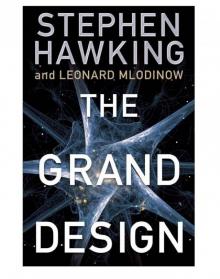 The Grand Design
The Grand Design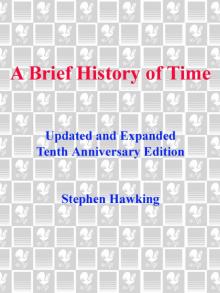 A Brief History of Time
A Brief History of Time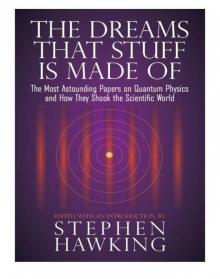 The Dreams That Stuff is Made of
The Dreams That Stuff is Made of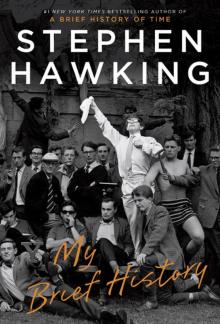 My Brief History
My Brief History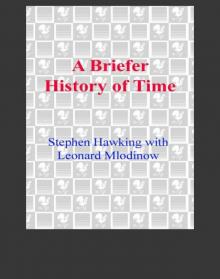 A Briefer History of Time
A Briefer History of Time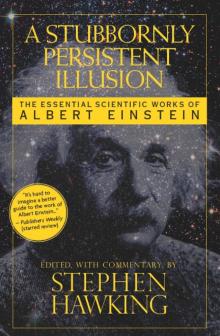 A Stubbornly Persistent Illusion
A Stubbornly Persistent Illusion George and the Blue Moon
George and the Blue Moon George and the Unbreakable Code
George and the Unbreakable Code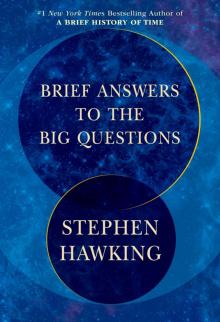 Brief Answers to the Big Questions
Brief Answers to the Big Questions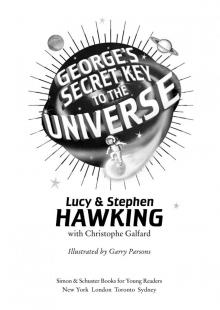 George's Secret Key to the Universe
George's Secret Key to the Universe